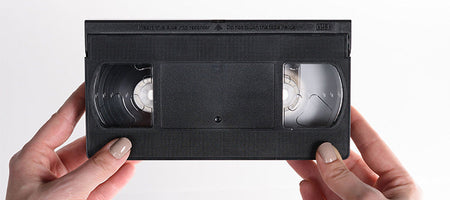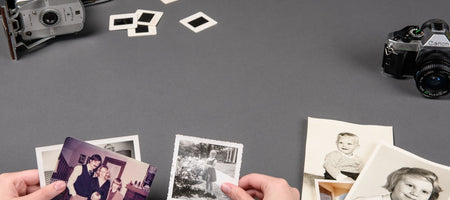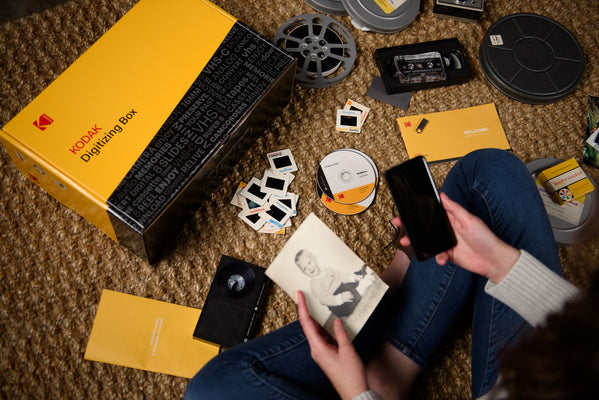Many of us can remember the impatience of waiting for our favorite movie to rewind on our ever faithful VHS tapes. Maybe your family even had one of those high speed rewinders, like they had at Blockbuster, who always encouraged us to “Be Kind. Please rewind.” Because let’s be honest, no one wanted to plop in a video rental and have it start playing right in the middle of the movie’s climax.
For those of us who remember the “good ol’ days,” we remember the massive storage containers and entertainment centers that populated suburban homes. Everyone wanted a way to organize and store their VHS collection, like a proud library of books in their home theater spaces.
The VHS as a media device dominated the home movie industry from the 1970’s to the early 2000’s.Multiple recursions of the media device, the VHS and S-VHS, saw the rise and fall of the VHS kingdom over three decades, as it transitioned from every family’s go-to technology, to a dusty remnant of times gone by.
VHS, What Does It Mean
Hollywood began using magnetic tape for recording in the 1950’s, but this technology was costly and unaffordable for everyday use. The 1970’s saw the meteoric rise of JVC, the Victory Company of Japan, and average citizens all over the country swarmed stores to get their hands on this newly available technology, the U-matic, which became available in 1971. The VHS would later become available in the United States in 1977 after a successful reveal in Japan in 1976. The Video Home System competed for years with Betamax, a Sony product that was released earlier and was technologically superior, but also vastly more expensive. You may even have some old Betamax cassettes in your collection, but hindsight tells us that VHS won its competition against Sony and became the preferred household product. Don’t worry! We digitize Betamax too!
Techs and Specs
A relatively simple looking device, the VHS was designed to prevent unspooling. The cassette contains two small spools of magnetic tape, including the supply reel and the take-up reel. Beginning-of-tape and end-of-tape sensors prevent the tape from potentially unspooling itself inside the VCR. Regulations for magnetic tape were actually much thinner than what came out of production. Most magnetic tape was produced at thickness higher than regulation called for to prevent breaking and tearing in the tape. After all, the VHS tape is both incredibly thin but also relatively durable. It has to be since Tom Hanks made a raft with hundreds of feet in it in the 2000’s blockbuster, Castaway, right?
At the thinnest acceptable width for playback, a VHS cassette can hold about 1,140 feet of tape (nearly four football fields), and about 4 hours of footage. At either end of the spool, clear tapes provides a signal to the VCR that the end of the tape is near. Making cassette tapes with plastic produced a nice, lightweight product that could store hours of footage without the heavy film reels of the past. The entire cassette is 187 mm wide, 103 mm deep, 25 mm thick. The device is screwed together with 5 miniscule philips head screws.
Collaboration Motion Picture Association of America
The best thing about the VHS tape was the ease with which users could access their video. Even for those who were not technologically inclined, the VHS and VCR were relatively easy to operate, even if their inner workings were nothing short of a marvel. This became problematic for the Motion Picture Association of America. The organization feared copyright infringement would run rampant with such easy access to recording technology. They feared that home users would produce as many copies of the store-bought videos as they wished, which would impact sales. This led to the creation of Macrovision, a system of coding that would prevent users from making their own copies of VHS tapes at home. It’s also why you see copy warnings every time you slid a new VHS tape into the VCR. Invented in 1983, it was released to the market and the first film to use Macrovision was The Cotton Club.
The Rise and Fall of the VHS Empire
Eventually JVC made improvements to the VHS and released the S-VHS, or Super VHS. This iteration of the device came with improved video bandwidth, making it a popular choice for the camcorder market. Maybe you remember or even had one of those magnificent early camcorders that held an entire full-size VHS cassette! They were massive over-the-shoulder cameras that looked destined for a news studio rather than your family vacation. Again meeting a need, JVC later released the VHS-Compact, or VHS-C, in keeping up with the ever evolving camera industry. Although the VHS-C was originally developed as a device for portable VHS players, the market thrived as palm-sized video cameras became the standard. As the tech grew, the hardware shrunk. Finally, the Digital Versatile Disc, or what we now know as the DVD displaced the VHS, due to DVD’s superior quality capabilities. In 1995, big names like Apple and IBM came together to demand a single format, which encouraged Phillips and Sony to shake hands and adopt a standard format that could be used in all computers. DVD went on sale in 1996 in Japan but took until 2003 to become a household name in America, where it became the go-to format moving forward until Blu Ray and streaming took over in the late 2000s/early 2010s.
Alas, we said goodbye to VHS and the notion of having to rewind our favorite movies after watching. Chances are, you still have some old VHS cassettes taking up storage space in your house. Most likely in a box in your attic or a tub in your basement. Don’t let those tapes get dusty. You can relive those old favorites and the memories made by your family just like that! Send your old tapes to KODAK Digitizing Box, and we’ll be sure those VHS artifacts end up on an easy to watch, digital format!













